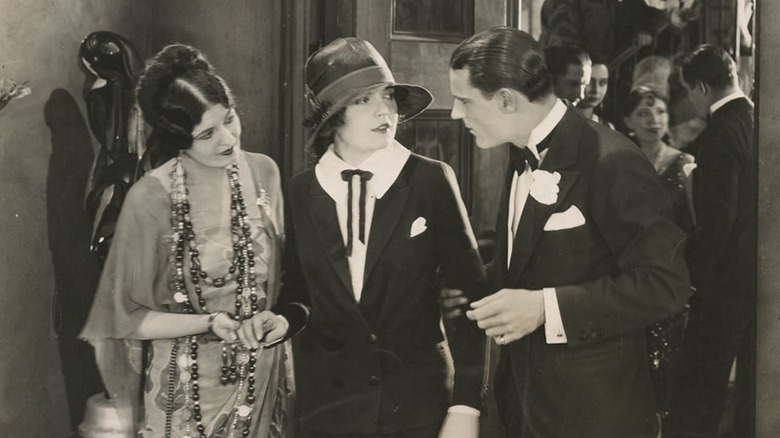Warner Bros. Pictures
In the world of literature, the question of what makes up The Great American Novel is always up for debate. However, F. Scott Fitzgerald’s “The Great Gatsby” is often a top contender. While it’s easy to view this masterpiece as merely a vivid depiction of the Roaring Twenties, the novel is so much more. It penetrates the facades, unveiling the captivating enigma of its central character. As the fog clears, we see Jay Gatsby and his sole companion, Nick Carraway, for who they truly are, leaving behind a profound sense of void. “The Great Gatsby” is a narrative about the intrinsic emptiness of grandeur, excessive wealth, and superficial relationships that only appear to have depth. When we encounter the scattered moments of genuine emotion in this otherwise grimly tragic tale, the hollow allure of the novel’s symbolic green light assumes a dreadfully haunting glow.
A book of such complexity and adoration must have inspired at least one film interpretation that successfully encapsulates its elusive core… hasn’t it? The answer isn’t straightforward, as some film versions of “The Great Gatsby” are commendable in their own right, despite their inherent shortcomings. The most recent and popular adaptation is the 2013 Baz Luhrmann’s interpretation featuring Leonardo DiCaprio and Tobey Maguire. Critics claim that the film gets lost in the very boisterous extravagance it attempts to critique, leaving little room for nuance. However, I would argue that Luhrmann creates plenty of room for intense, introspective scenes, particularly during the exploration of Gatsby’s unraveling mythos as he stands on the precipice of losing everything. Though the film falls short of fully addressing the depth of its source material, it never claims to be something it isn’t.
If we are to use Rotten Tomatoes as a gauge for the best Gatsby adaptation, the 1926 version of “The Great Gatsby” takes the cake with a score of 52%. Surprisingly, this is the highest overall score, with every other direct film adaptation of the novel — as opposed to loosely-based interpretations — having a “rotten” score on the platform.
The Unique Aspects of the 1926 Gatsby Adaptation

Paramount Pictures
Before discussing the 1926 version, it’s worth mentioning another notable “Great Gatsby” adaptation from 1974, starring Robert Redford and Mia Farrow as Gatsby and Daisy Buchanan respectively. Director Jack Clayton stayed true to Fitzgerald’s novel, bringing to life memorable passages with dedicated performances and lively set design. However, despite these earnest efforts, including a solid screenplay by Francis Ford Coppola, the film fails to capture the mesmerizing allure of the themes that continue to captivate us, resulting in an adaptation that never dares to stand on its own.
Returning to the 1926 silent movie by Herbert Brenon (known for “Peter Pan,” “Neptune’s Daughter”), it’s important to note how much it deviates from the original novel. Despite being a direct (and apparently the first) adaptation of the novel, it alters fundamental aspects of the main characters, including Daisy’s (Lois Wilson) reasons for rebuffing Gatsby (Warner Baxter) and the circumstances of the fatal car crash towards the end. The story’s essential rhythm is maintained, with a young Nick Carraway (Neil Hamilton) slowly realizing Gatsby’s true nature while also recognizing the Buchanans’ callous cruelty and hypocrisy. Strangely, the film concludes with a tranquil scene of the Buchanans and their newborn, without any hint of the tragedy they caused or the man at its center.
Brenon’s film rarely comes up in Gatsby discussions because it’s now considered lost media, with only the trailer and a few short clips available for viewing. It’s worth noting that Fitzgerald despised this adaptation, branding it as “rotten and awful and terrible,” though he didn’t explain why. If your quest for a competent “Great Gatsby” film adaptation remains unfulfilled, you might want to consider Robert Markowitz’s 2000 version. While it may not be much, the film features Paul Rudd in a noteworthy portrayal of Carraway, which could be its sole redeeming quality.
Credit: www.slashfilm.com


